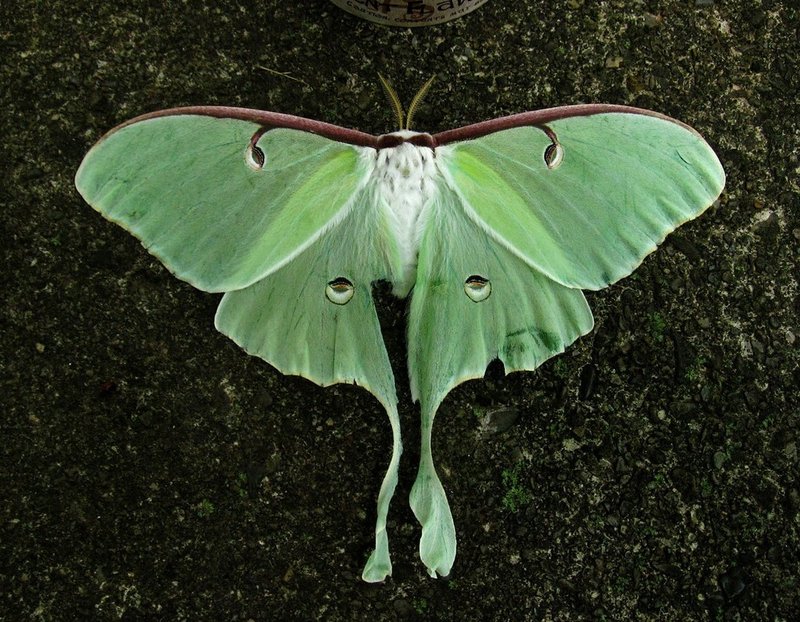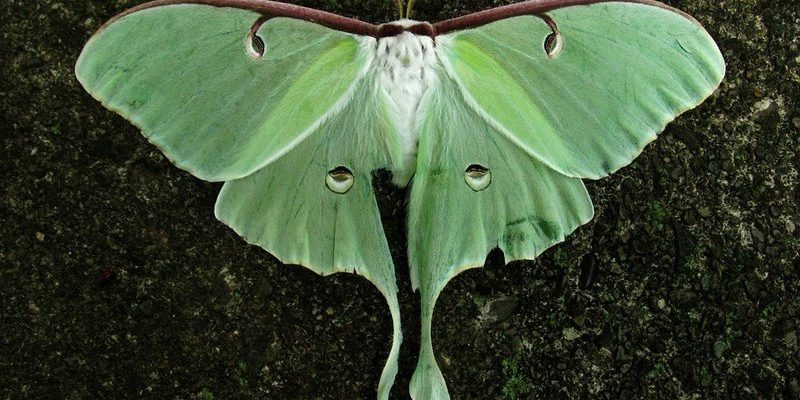
The Luna Moth, known scientifically as *Actias luna*, prefers lush settings, often choosing areas close to water. Think about it: just like we might gravitate toward a cozy café with a nice view, these moths seek out the right conditions for their survival. In this article, we’ll explore the habitats of the Luna Moth and dive into their remarkable adaptations that allow them to flourish.
Natural Habitats of the Luna Moth
Luna Moths can primarily be found in the eastern United States and parts of Canada. Their habitats range from deciduous forests to urban gardens, demonstrating their adaptability. These beautiful insects prefer environments rich in host plants, as their larvae feed on the leaves of trees like birches, willows, and sweetgums.
You might be wondering why these specific locations? Well, it’s all about food. The caterpillars need to munch on these leaves before they undergo their miraculous transformation into moths. Additionally, the moist, sheltered spots near water bodies, such as ponds or streams, create ideal conditions for the adult moths to thrive. Just like how we enjoy the comfort of a shaded park on a hot day, Luna Moths also benefit from the cooler, humid microclimates in these areas.
They also have a broad geographical range, extending into places like parts of Mexico. This adaptability to various climates helps them survive as they can find new food sources and breeding grounds.
Seasonal Patterns and Activity
The Luna Moth’s life cycle is closely tied to the seasons. They emerge during late spring and early summer, when temperatures start to rise and food is plentiful. You might catch a glimpse of them flitting around in the evening, drawn to the soft glow of porch lights or street lamps.
Interestingly, these moths have a relatively short adult lifespan, living just about a week. During this time, they focus on mating and laying eggs to ensure the next generation continues. The timing of their emergence is well-planned; as soon as they hatch, the caterpillars have ample time to grow before the leaves begin to fall in autumn. They perfectly align their life cycle with the seasons, ensuring they always have food at their disposal.
Understanding these patterns helps us appreciate how deeply connected the Luna Moth is to its environment. They don’t just exist; they thrive by adapting to the rhythms of nature.
Physical Adaptations for Survival
Look at a Luna Moth and you’ll instantly see its stunning design. But these beautiful wings aren’t just for show; they play a crucial role in their survival. The pale green color acts as a perfect camouflage against leaves, helping them blend into their surroundings and evade predators. It’s a bit like wearing the right outfit for a special occasion—you want to stand out, but just enough that it adds to the overall experience rather than drawing unwanted attention.
Additionally, those eye spots on their wings aren’t just pretty patterns; they mimic the eyes of larger animals. This clever trick can startle or deter potential predators, giving these delicate creatures a better chance at survival. The intricate details on their wings are nature’s way of ensuring the Luna Moth can thrive in a world filled with threats.
Behavioral Adaptations
Beyond physical traits, Luna Moths exhibit fascinating behaviors that enhance their survival rate. For instance, they are primarily nocturnal, which is a smart strategy for avoiding daytime predators like birds. By emerging at night, they can navigate their surroundings in a calmer, quieter environment.
Another interesting behavior is their use of pheromones for communication. Female Luna Moths release scents that attract males over long distances. This olfactory signal is crucial for mating, ensuring that they find each other in the vast outdoors. It’s like sending out a friendly invitation to the most important event in their lives: reproduction.
These behaviors demonstrate their keen adaptability and show just how in tune they are with their ecosystems. Nature is truly a master of clever solutions!
The Role of Luna Moths in the Ecosystem
Luna Moths play an important role in their ecosystems, like a crucial piece in a larger puzzle. As pollinators, they contribute to the health of various plants. When they visit flowers for nectar, they inadvertently help in pollination, aiding in plant reproduction and promoting biodiversity.
Additionally, they serve as a food source for many birds and other predators. This means that by existing, they help sustain a balanced food web. Just like we rely on different food groups for a healthy diet, ecosystems rely on diverse species to maintain balance and resilience.
Understanding their role helps us appreciate the interconnectedness of life. Every creature, no matter how small, contributes to the harmony of nature.
Conservation of Luna Moths
Despite their beauty, Luna Moths face challenges, primarily due to habitat loss and pollution. Urban development often destroys their natural habitats, leaving them with fewer places to thrive. It’s a bit like taking away a cozy café; without a comfortable environment, it’s hard to enjoy life.
Conservation efforts are vital in ensuring these enchanting moths don’t disappear. This includes preserving forests, protecting water sources, and planting native flowers. Educating the public about the importance of Luna Moths can also create a stronger community of advocates for their protection.
Participating in local conservation activities or simply creating moth-friendly environments in your garden can make a big difference. Every little effort counts toward helping these remarkable creatures continue to flutter through our nights.
Luna Moths are more than just pretty faces; they’re fascinating beings with rich lives woven into the fabric of our ecosystems. From their unique habitats to their clever adaptations, they remind us of the complexity and beauty of nature. Understanding where the Luna Moth lives and how it adapts not only enhances our appreciation for these creatures but also highlights the importance of protecting their environments.
Next time you’re outdoors, especially during those warm summer evenings, take a moment to look for these magical moths. Their presence is a gentle reminder of the wonders of the natural world, and the part we all play in preserving it. With a bit of awareness and action, we can help ensure that future generations get to experience the magic of Luna Moths in all their glory.

